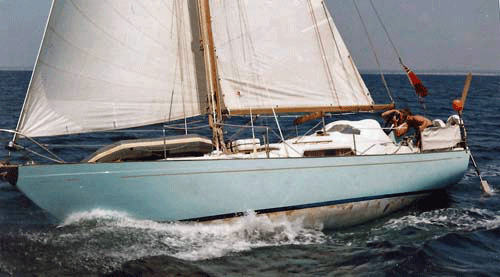- Home
- Nicholson Sailboats
Nicholson Sailboats: A Legacy of Seaworthiness and Enduring Craftsmanship
For discerning sailors and yacht owners, the name Nicholson often conjures images of robust, capable vessels designed for serious cruising. These aren't the flashy, ultra-light racers of today, but rather yachts built with a profound understanding of the sea, intended to carry their occupants safely and comfortably across oceans. Far from a mere production line, Nicholson sailboats emerged from a rich lineage of British boatbuilding, establishing a legacy defined by thoughtful design and unyielding construction.
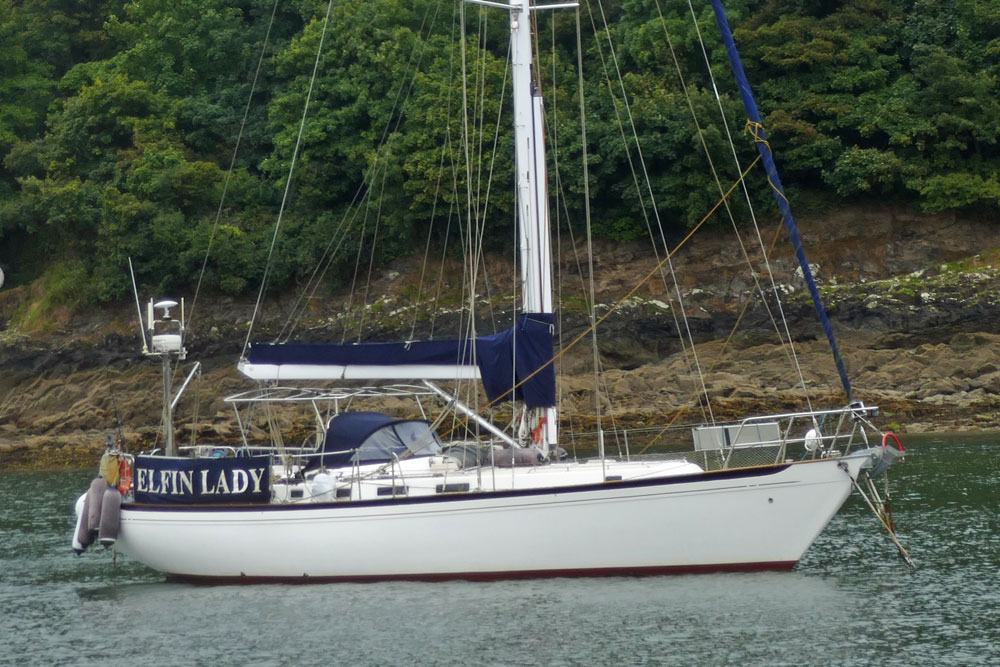 Nicholson 476
Nicholson 476Table of Contents
The Deep Roots of Nicholson: A Storied History
Design Evolution and Key Models: A Spectrum of Cruising Yachts
Construction and Quality: Built to Endure
Performance and Onboard Experience: A Seakindly Ride
The Deep Roots of Nicholson: A Storied History
When, where, and by whom was the company founded?
The story of Nicholson sailboats is inextricably linked to Camper & Nicholsons, a name synonymous with British yachting heritage for centuries. The company's origins trace back to 1782, when Francis Amos started a shipyard in Gosport, England. William Camper apprenticed there in 1809 and later took over the yard in 1824.
The crucial turning point for the "Nicholson" name came in 1842, when Ben Nicholson joined as an apprentice, eventually rising to chief designer. In 1863, Camper and Nicholson was formally established, financed by both the retiring William Camper and the Lapthorn family, under the control of Ben Nicholson. The firm would later adopt its present-day name, Camper & Nicholsons, with the arrival of Ben's three sons.
Key milestones, ownership changes, and innovations
Under Ben Nicholson's leadership, the Gosport facilities underwent significant expansion over 30 years. The early 1900s saw the firm's global acclaim, largely thanks to the design prowess of Ben's middle son, Charles E. Nicholson. Charles was a true innovator, credited with designs featuring the first Marconi rig and significant Bermudan rigs. He also pioneered lightweight laminated wood construction in 1912 with the 15mR Istria, a technique later applied to the iconic 208-foot schooner Vira (now Creole), still recognized as the largest wooden sailing yacht in the world.
From 1912 to 1939, Camper & Nicholsons stood as the world's largest yacht-building company. While the company's focus expanded to include motor yachts and brokerage services, the fiberglass sailboat series, often simply referred to as "Nicholson," particularly the Nicholson 32 and later models, cemented their reputation for robust cruising yachts. Today, Camper & Nicholsons operates as a global leader in luxury yachting activities, specializing in brokerage, charter, and management.
What was the design philosophy behind Nicholson sailboats?
The design philosophy behind Nicholson sailboats, particularly their production fiberglass series, revolved around creating seaworthy, comfortable, and durable cruising vessels. They were not built to chase the latest rating rules or maximize interior volume at the expense of sailing characteristics. Instead, the emphasis was on:
- Seakindliness: Ensuring a comfortable motion in a seaway, with less pronounced pitching and rolling.
- Strength and Durability: Building boats that could withstand challenging offshore conditions.
- Cruising Capability: Providing the displacement and accommodations necessary for extended voyages with ample storage for gear and provisions.
Notable designers like Charles E. Nicholson and later, Peter Nicholson, continued this tradition. The designs often featured a pretty sheerline, a gentle curve to the stem, and practical transoms, emphasizing a classic aesthetic combined with functional design.
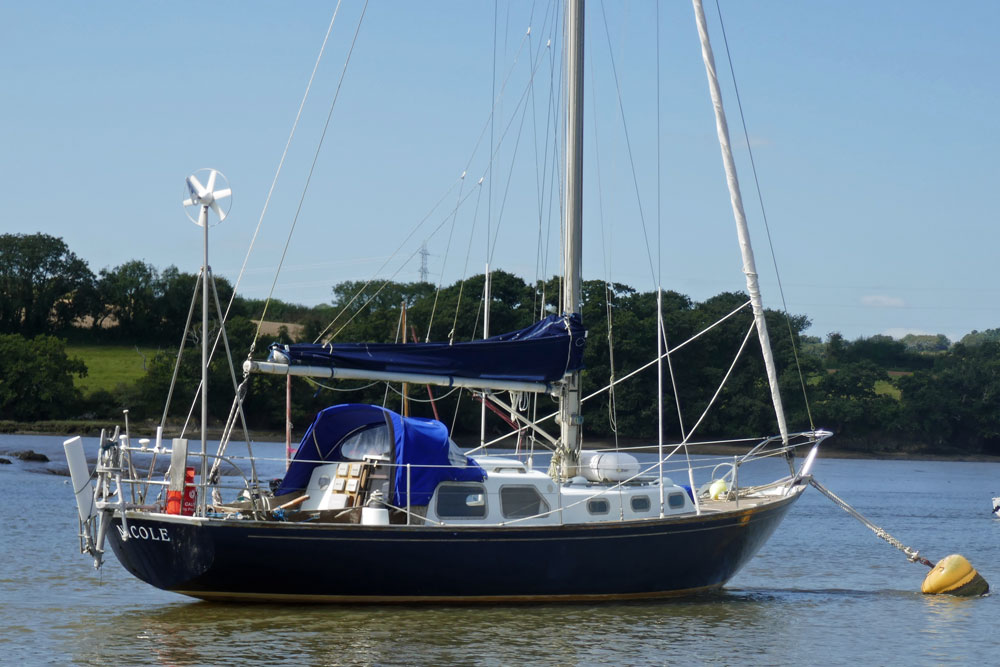
Design Evolution and Key Models: A Spectrum of Cruising Yachts
The Nicholson series of sailboats showcases an evolution from bespoke wooden yachts to a range of highly regarded fiberglass cruisers.
What were the foundational and iconic Nicholson sailboat models?
While Camper & Nicholsons built many custom wooden yachts over their long history, the true "Nicholson series" that resonated with recreational sailors began with the advent of fiberglass production.
- Nicholson 32: Launched in the early 1960s, the Nicholson 32 is arguably the most iconic and successful model in the fiberglass series. Designed by Charles and Peter Nicholson, it was conceived as a good-value, mid-sized cruising boat. It quickly earned a reputation for its immense strength and seaworthiness, becoming a popular choice for serious long-distance cruising. The Nicholson 32 went through numerous "Marks" (Mk I to Mk XI) during its nearly 20-year production run, with later models featuring modernizations like a raised freeboard and enlarged cockpit. Approximately 370 units were built, making it a common sight in cruising grounds worldwide.
- Nicholson 35: Introduced in the early 1970s, the Nicholson 35 built upon the success of the 32, offering a slightly larger and often more refined platform for cruising. It maintained the robust build quality and seaworthiness that owners expected from the brand.
- Nicholson 38: This model is recognized as a heavy-displacement cruiser, known for its solid construction and comfortable motion. While not a speedster, it excelled as a reliable bluewater cruising boat.
- Nicholson 48: A classic ketch designed by Raymond Wall and built by Halmatic and Camper & Nicholsons, the Nicholson 48 is another notable large cruising yacht. It’s praised for its quality, spacious interior, and exceptional seaworthiness, making it suitable for long-distance passages.
The Nicholson 476, introduced in the mid-1980s, marked a significant step in the evolution of Camper & Nicholsons' fiberglass production line, offering a larger, more contemporary option for serious bluewater cruisers. Designed in-house, the 476 upheld the brand's reputation for robust construction, typically featuring a fin keel with a skeg-hung rudder for reliable offshore performance. These semi-custom yachts offered versatility in design, with both center cockpit and aft cockpit configurations available, allowing for varied interior layouts—the center cockpit versions, in particular, often boasted a spacious aft master cabin. While fewer were built compared to the iconic Nicholson 32, its solid build and comfortable motion in a seaway cemented its place as a highly capable and desirable long-distance cruising yacht.
How did Nicholson sailboat designs evolve over time?
The evolution of Nicholson designs in the fiberglass era generally moved towards slightly larger, more accommodating vessels while retaining the core values of seaworthiness and solid construction. While early models like the Nicholson 32 had more traditional long-keel underwater profiles, later designs might have incorporated features that balanced cruising comfort with improved performance, though always prioritizing stability and safety over outright speed.
The shift from custom wooden builds to series-produced fiberglass yachts marked a significant change, making the brand more accessible to a broader market of keen recreational sailors.
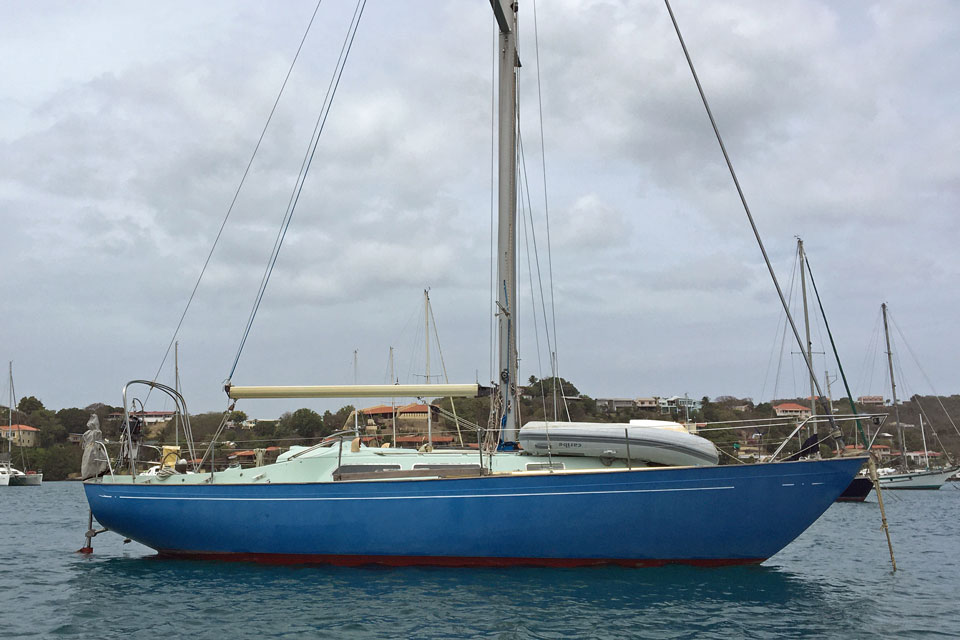 Nicholson 35
Nicholson 35Construction and Quality: Built to Endure
What materials and techniques were used in Nicholson sailboat construction?
Nicholson sailboats, particularly the popular fiberglass series, were renowned for their robust construction.
- Hull Construction: Hulls were predominantly hand-laid GRP (Glass Reinforced Plastic, or fiberglass) to Lloyds specifications. A key feature, especially in models like the Nicholson 32, was the "monocoque construction" technique. This involved bonding the hull, deck, encapsulated lead ballast, bulkheads, and internal furniture bases together to form an exceptionally strong and rigid unitary structure. Halmatic Ltd, a pioneer in fiberglass boatbuilding, often moulded the hulls, with Camper & Nicholsons undertaking the meticulous fit-out.
- Deck and Interior: Decks and coachroofs often featured balsa coring for stiffness and insulation. While some interiors, particularly in earlier fiberglass models, might have incorporated moulded modules, extensive use of teak trim and joinery ensured a warm, traditional feel, counteracting any "plasticky" perception.
- Build Quality and Durability: The build quality of Nicholson yachts is consistently described as exceptionally high. They were designed and constructed to withstand the rigors of offshore sailing, a testament to their enduring popularity among those seeking reliable and durable cruisers. Many older Nicholson models still command respect and are actively sailing the world's oceans today, a clear indicator of their longevity.
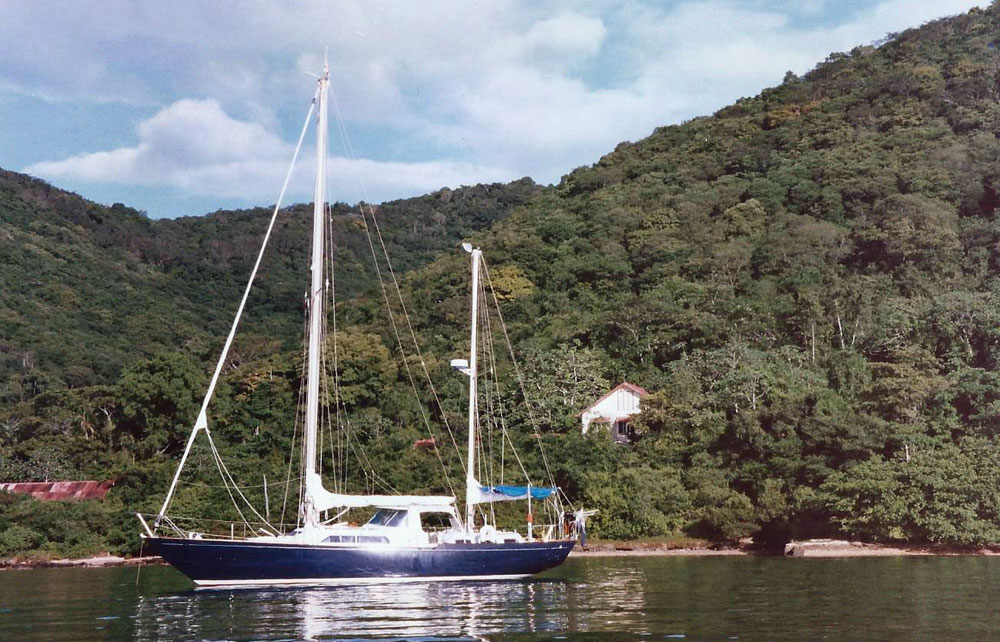 Nicholson 48
Nicholson 48Performance and Onboard Experience: A Seakindly Ride
What are the general sailing characteristics of Nicholson sailboats?
Nicholson sailboats are generally known for their predictable, stable, and seakindly sailing characteristics. They are often described as:
- Heavy Displacement: This contributes to their comfortable motion in a seaway, allowing them to power through choppy conditions rather than being tossed around.
- Good Stability: With high ballast-to-displacement ratios, they exhibit excellent initial stability and resistance to heeling, providing a secure feeling to those onboard.
- Steady and Predictable: While not the fastest boats in light airs due to their heavy displacement, they are reliable and maintain course well, making them suitable for long passages where comfort and ease of handling are paramount.
- Excellent Seaworthiness: Their strong construction, deep keels (often long keels or fin keels with a keel-hung rudder), and robust rigs contribute to their outstanding offshore capability. Owners frequently praise their ability to handle rough weather with confidence.
How does a Nicholson 32 perform in bluewater cruising?
The Nicholson 32, in particular, has a strong reputation as a capable bluewater cruiser. Its design ratios indicate a heavy and stable boat. With a Comfort Ratio typically in the 40-50 range, it offers a comfortable ride in rough seas, minimizing pitching and rolling. Furthermore, its Capsize Screening Formula often falls below 2.0, reinforcing its suitability for ocean passages and indicating a lower propensity for capsizing. While it may require more sail area in lighter conditions, its strength and stability make it an excellent choice for extended offshore voyages.
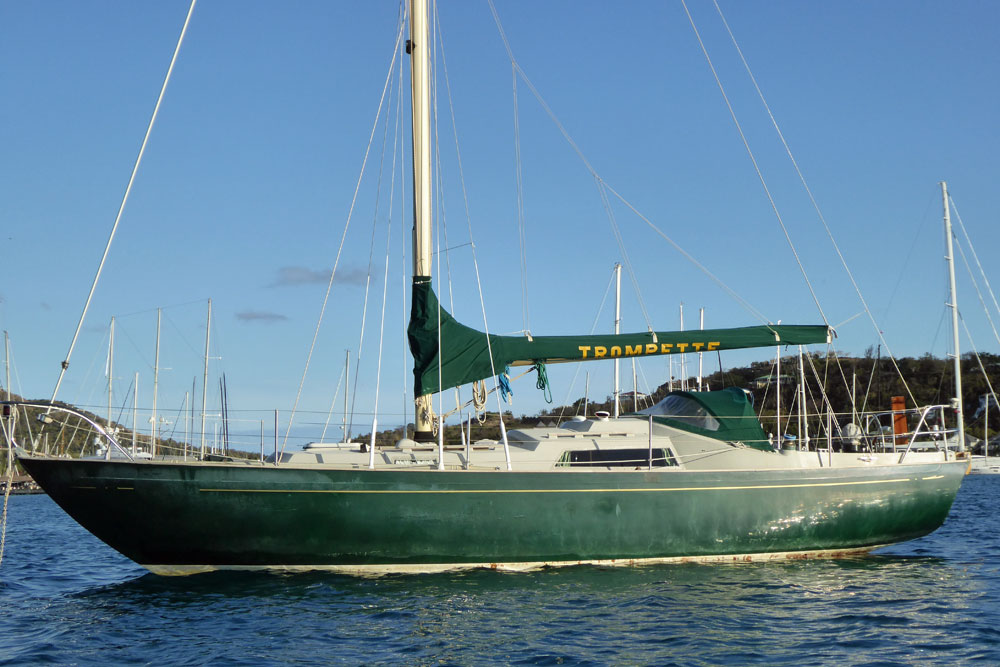 Nicholson 32MkXI
Nicholson 32MkXIHow does the Nicholson 38 perform for cruising?
The Nicholson 38 is also noted as a heavy sailboat with reasonably good performance. Its displacement-to-length ratio of around 360 suggests a powerful vessel, and its Capsize Screening Formula of 1.67 further confirms its suitability as a bluewater cruising boat. While not particularly "stiff" in terms of initial heel, its excellent righting capability makes it a secure choice for offshore work.
What is the onboard experience like on a Nicholson sailboat?
The interior layout of Nicholson sailboats, particularly the larger models, prioritizes functionality, comfort, and ample storage for extended cruising.
- Interior Styling and Layout Logic: Interiors are typically finished with extensive use of teak joinery, creating a traditional and warm ambiance. Layouts are pragmatic, designed for life at sea. For instance, settees in the saloon might be brought inboard to maximize stowage, and pilot berths are common for offshore use.
- Key Features and Amenities: While older models might lack some of the more modern conveniences, many have been upgraded over the years by their owners. Expect well-appointed galleys, functional heads compartments (often with showers even on smaller models), and good ventilation. The emphasis is on practical living spaces that are secure and comfortable in a seaway.
- Suitability for Liveaboard or Long-Term Cruising: Many Nicholson models, especially the 35, 38, and 48, are well-suited for liveaboard or long-term cruising. They offer ample storage for provisions and gear, robust systems, and a layout that can accommodate life at sea. The solid construction and comfortable motion in a seaway make them excellent choices for those seeking to spend extended periods onboard.
How does the center cockpit on a Nicholson 48 enhance comfort?
The Nicholson 48, often rigged as a ketch, features a deep, well-protected center cockpit. This design provides significant benefits for comfort and safety, particularly in adverse weather. It creates a pilothouse-like space, offering excellent protection from the elements, whether it’s the blazing sun in the tropics or cold, wet conditions in higher latitudes. The raised salon forward of the cockpit often features large windows, ensuring a bright and inviting interior. This setup also allows for a substantial aft cabin, enhancing liveaboard comfort and privacy.
What to Look For: Buying a Nicholson Sailboat
While Nicholson sailboats are renowned for their durability, like any classic vessel, potential buyers should be aware of certain considerations.
Are there any known issues or historical quirks with Nicholson sailboats?
- Older Systems: As with any older boat, the electrical, plumbing, and engine systems may be original and require updating or careful inspection.
- Osmosis: While their fiberglass construction is robust, some older fiberglass boats can develop osmosis, though this is not unique to Nicholson and can often be rectified.
- Interior Condition: The extensive use of teak joinery means that if not properly maintained, interiors might show signs of wear or water ingress, though conversely, well-maintained examples will still be beautiful.
- Light Air Performance: Due to their heavy displacement, some Nicholson models may be sluggish in light winds, which might be a consideration for those prioritizing speed in all conditions.
- Maintenance Costs: While built to last, older boats generally require ongoing maintenance and may have higher costs for replacement parts compared to more modern production yachts.
When inspecting a Nicholson, focus on the integrity of the hull and deck, the condition of the standing and running rigging, and the state of the engine and ancillary systems. An in-depth survey by a qualified professional is always recommended.
Summary: The Enduring Appeal of Nicholson
The Nicholson series of sailboats represents a golden age of British yacht building, a time when seaworthiness, durability, and classic design were paramount. From the highly successful and ubiquitous Nicholson 32 to the larger, more commodious Nicholson 48, these vessels offer a compelling blend of robust construction, comfortable interiors, and predictable sailing characteristics. They were built for the long haul, designed to carry their crews safely and comfortably across any ocean.
While modern yacht design has moved towards lighter, faster, and often more voluminous boats, the enduring appeal of Nicholson lies in their honesty, their undeniable strength, and their ability to instill confidence in their owners. For the recreational sailor or sailboat owner seeking a proven bluewater cruiser, a vessel capable of taking on serious passages with a classic aesthetic and a rich heritage, a Nicholson sailboat remains a truly noteworthy and highly regarded option. They are not merely boats; they are steadfast companions, ready for adventure, embodying a timeless commitment to the art and science of proper yacht building.
Resources & References
- Yachting Since 1782 | C&N - Camper & Nicholsons
- Camper & Nicholsons | Sailboatdata.com
- About the Nicholson 31
- Camper & Nicholsons for sale | TheYachtMarket
- Nicholson 26 with Comfort and Class - Boatshed Plymouth
- In memoriam: Camper & Nicholsons broker George Nicholson passes away
- Nicholson 40DS - Opinions? - YBW Forum
- Camper & Nicholsons
- Charles Ernest Nicholson - Wikipedia
- Nicholson, Charles Ernest (1868-1954) UK - America-Scoop
- Nicholson 32 archive details - Yachtsnet Ltd. online UK yacht brokers
- 1976 Nicholson 35, Killybegs Ireland - boats.com
- Saare 41.2 review: 'One of the best cruisers you will ever sail' - Yachting Monthly
- Nicholson 38 - Sailboat Specs, Data & Performance. - SailboatLab
- Nicholson 48 - 1001 Boats
- Camper & Nicholson 48 Raised Salon Ketch - SALT - Swiftsure Yachts
Recent Articles
-
Hans Christian 43: Classic Bluewater Cruiser & Liveaboard Sailboat
Dec 10, 25 04:37 AM
Explore the Hans Christian 43: a legendary heavy-displacement, long-keel sailboat. Read our in-depth review of its specs, design ratios, and suitability for offshore cruising and living aboard. -
Planning Your Sailboat Liveaboard Lifestyle: An Ocean Sailor's Guide
Dec 06, 25 05:18 AM
Seasoned sailors share their methodical risk analysis for planning a secure Sailboat Liveaboard Lifestyle, covering financial, property, and relationship risks. -
Marine Cabin Heaters: The Expert’s Guide to Comfort & Safety at Sea
Dec 05, 25 06:52 AM
Choose the best Marine Cabin Heaters for your vessel. Expert advice on diesel, paraffin, and hot water systems for year-round cruising comfort.
